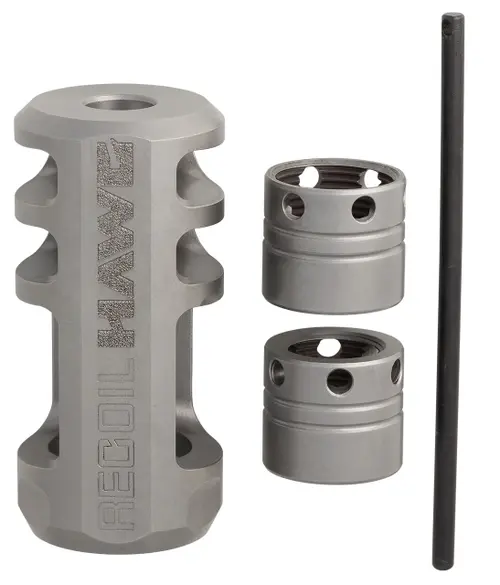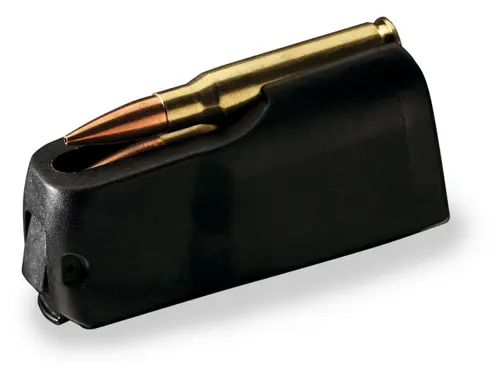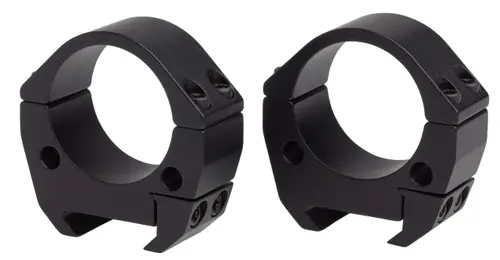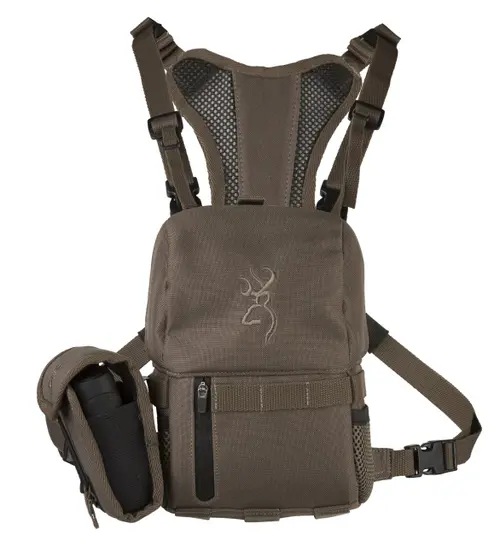Long-Range Shooting 101
ByTerry Distan Published on Aug 29, 2023
Do you have a desire to stretch the legs of your favorite hunting rifle? What is your longest shot? Have you punched lungs or hit steel at 400 yards? What about 500? Have you hit 1,000? Maybe you haven’t considered taking a long-range shot, yet? What is holding you back from pulling the trigger and testing the abilities of both your equipment and yourself? Have you considered setting a long-range shooting goal like hitting a car-sized target at 1,000 yards? Or, maybe, you want to set a personal best by placing five shots in a two-inch group at 1,000 yards? Goals are important.
Since I was a young boy, I have loved all things outdoors — especially hunting and shooting. Growing up on a ranch in Utah, I got to experience it all. But by far, my favorite was hunting with my father and his buddies. Most of their hunting stories included the saying,” I just held on his back and pulled the trigger.” Sound familiar? From there, they would indulge in estimating how far the shot was. Back then, no one had rangefinders, bipods, or spotting scopes. I don’t even think that all the ammo in the pack was the same load. So, how did they know how far away their quarry was or if the rifle they had would get the job done? As I got older, I wanted to understand more about the skill of shooting at distance. Admittedly, I still have a way to go, but I have already learned so much. For myself, and many others in the shooting/hunting world, the further you get, the more you want to learn.
Ethics and Long Range Shooting
Being a competitive shooter, I get into interesting conversations with people. Some shooters are much more accomplished and have travelled further down the shooting rabbit hole than me, while others are new to the sport. For those stuck at the starting line, here is your mark.
The statement I hear most is, “I want to be able to shoot 1,000 yards.” Another common one is, “I want a 1,000-yard gun.” I have no idea how a thousand yards became the benchmark for so many people. Once you learn how to shoot and have the gear for five hundred yards, you will have all you need for almost any distance.
In other conversations, people start talking about hunting ethics and only shooting so far on animals. There is plenty of argument on both sides of this. One could argue that a person shooting a big caliber rifle like a .300 Win. Mag once a year before a hunt shouldn’t take a 400-yard shot because if the hunter is out of practice, 400 yards is a long shot. That said, is it more or less ethical for a person who shoots their 6mm Creedmoor daily to take a shot on an animal 800-yards out? We could debate ethics all day but roll those two scenarios around in your head and make up your mind. Sometimes it all comes down to how much time you’ve spent shooting long-range targets to know your gun and limits. Maybe you wouldn’t take either shot based on your knowledge of long-range shooting and the effects of wind and other environmental factors that day. Or maybe you feel comfortable taking a longer shot because you have shot a couple of thousand rounds that year practicing or competing. Time and learning are the two most important things about long-range shooting.
Run What You Bring
When entertaining the notion of long-range shooting, the first thing most people question is their rifle. But the fact is, a quality rifle like Grandpa’s old A-Bolt is likely capable of doing the job. Most rifles — old or new — can shoot accurately at distance with a little time and effort. This may include finding a load the rifle likes, pairing it with a better optic, or having a custom trigger or new barrel installed by your favorite gunsmith. Although you can make most rifles acceptable long-range shooters, most can’t compare to a new Browning X-Bolt Target Max. Compared to an older model, this rifle is light years ahead in features, precision, and accuracy potential.
Stock And Barrel
One of the most noticeable features that separate newer rifles from the family heirloom in your safe is stock material with modern synthetics replacing wood. While not as pretty, a synthetic has the advantage of reacting less. When the temperature and humidity shift, wood can shrink or expand, and in old guns with a barrel that was not free-floating, this will cause different harmonics or vibrations in the barrel that lead to changes in the point of impact. Additionally, if the wood stock is tighter against the barrel when the barrel is hot and expanded and pulls away from the barrel when cold, accuracy will shift.
Today, most guns have a free-floated barrel and synthetic stock. Is this combination a must have? No, but successful long-range shooting is all about removing as many variables as possible to put the repeatability of long shots more in your favor.
Trigger
For most long-range competitors, me included, a very crisp trigger with a light pull is a must. If a trigger is crisp, there is minimal take-up before the trigger engages the sear pin. A light pull means no more than two and a half pounds of pressure to depress the trigger. Most factory rifles will have the trigger pressure set that high or higher to pass a drop test.
The patent-pending Target DLX Trigger in Browning X-Bolt Target rifles delivers the light touch you need for accurate shooting. This trigger is a multiple-lever design with zero creep, zero take-up, zero overtravel and a glass-like break. The Target DLX is adjustable with a range of 2 to 3.3 pounds and comes factory set at 2.5 lbs.
Is the trigger a must? No, and you want a heavier pull to be safe for hunting. However, if you practice a lot and learn the feel of a light trigger, this feature will boost your long-range target accuracy.
Muzzle Brake
No one likes shoulder abuse. Even experienced shooters will make lousy trigger pulls for a number of reasons, with a major one being recoil. Forget your pride and ego and admit if your trigger pull/jerk is caused by recoil. The Browning Recoil Hawg will knock out 76 percent of the felt recoil on some rifles. A Recoil Hawg will help immensely, but if that’s not an option for your rifle, there are a number of recoil-dampening devices on the market.
Optics
A simple Leupold 3x9 scope was top-of-the-line back in my dad’s time, and a duplex reticle was the standard.
Glass and reticles have come a long way in both optical power, clarity, and mechanics of the scope. Now, most scopes are at least a four power on the low end with up to 35 power on the top variable. This gives you the ability to zoom much closer on longer shots. The size of the objective, which gathers light, and the overall clarity of the glass are lightyears ahead of scopes of yesteryear.
In the past, holding off the target high/low or left/right has had slang terms such as “Kentucky Windage” associated with this method of aiming. Although holdovers can work in a pinch, dialing for the crosshairs is a far better method of achieving consistent, repeatable accuracy. For vertical and wind dials, that means dialing or “doping” the scope so that the crosshairs are adjusted to be on the target. It’s hard to measure to hold the same place every time without mil dots or a reticle with numbered marks.
While the technology for more zoom has been possible for years, we still didn’t take as long of shots as we were capable of because we needed to know the exact range of the target. Enter the era of the rangefinder. These gadgets are one of the most significant game changers for hunting and long-range shooting. In the past, when you were bowhunting or rifle hunting, you had to guess the range of the animal — a skill that was tricky to perfect. Our forefathers estimated distance by measuring known or standard sizes like the length of a deer or the width of an elk. Then they would do the math to see how far it was to make a geometry point where the bullet would be with the wind. It’s a nightmare and becomes a trigonometry problem.
Today, pointing a rangefinder and pressing a button is much easier than remembering high school math classes. You can find quality rangefinders for under $200 to over $3,000. To get started, a simple $250 range finder will get you the information you need to shoot long distances. If you go for a $2,000 model, it will help significantly with a few things I’ll cover momentarily.
Some of you may have all the gear mentioned thus far. But the following extras are where most shooters that I work with get lost or need help. This part may feel like drinking from the fire hose, but it’s simple once you get some repeatability.
Bullet Speed
The speed of your projectile is a must-know. If you buy factory ammo, most boxes will have a speed rating stamped on the box. This gives you an idea of the speed, but it’s not exact. These ratings are typically based on a 24-inch barrel and depend on what elevation and weather variables were present when speed data was gathered.
To make sure your gun isn’t shooting faster or slower, we need to verify using a chronograph. There are simple chronographs for $150 that use a Magneto that attaches to the barrel. At the top end, LabRadar has a unit that sets up next to your rifle and measures speed even down range from the muzzle.
You don’t necessarily have to buy a chronograph, either. Many ranges have them to rent or borrow. Another idea is to get a loaner from a friend or fellow shooter.
Once you have the bullet speed, you are almost done with your math equation or with the simple inputs on your phone app or Kestrel ballistics meter.
Ballistic Coefficient
The next variable you need is your BC (ballistic coefficient). Think of BC as a batting average for your bullet. The better your bullets perform (mathematically) in the wind, the higher the decimal number. Let’s break it down this way: A .22 Long Rifle bullet has a BC of .146. A .50-caliber 750-grain Hornady A-Max is 1.050. You can see a massive difference in how much wind affects the bullet and how much drop the bullet will have.
Bullet design has changed a lot over the past couple of decades. Bullet improvement is the most significant factor in helping the A-Bolt or older rifles shoot better. Grandpa didn’t have access to the type of bullets you do. Given the rifle, your odds at 500 or 1,000 yards is worth a shot and it may surprise you how well it does. Tons of money and research has gone into bullet design. Some shooters think bullets tumble after 1,000 yards or a certain distance. This may be true of some bullets, but the newer boattail design boosts airflow around the bullet tail rather than creating vortices or swirling air at the back of the bullet that destabilizes the bullet, which causes tumbling.
.22 Long Rifle guys like Chris Baxter want to push to 1,000 yards — even a mile. Centerfire cartridges now go to 4,000-plus yards, and 2-mile competitions are being held yearly, with shooters producing repeatable results at those distances. While those distances seem overwhelming, we come to the people and things that make it much more manageable. Applied Ballistics have started mastering technology to put mathematical algorithms together and put those algorithms in binoculars, rangefinders, handheld weather devices, and apps on your phone. The Kestrel is an excellent device with Bluetooth capabilities that can link to rangefinders or range finding binoculars. This is probably one of the most accurate weather and data devices to calculate “dope” or dial your scope to. A built-in wind meter will also tell you how far to hold for wind. Also, it will tell you how far to hold for long distances with no wind due to spin drift. Spindrift is caused as the bullet twists through the barrel’s rifling, spinning it right or left (typically right). Downrange, the bullet will naturally drift the way it’s spinning. Even if your rifle is zeroed correctly and there is no wind, it will start hitting right or left. The devices from Applied Ballistics will tell you how far to dial or hold from the intended point of impact. Almost all these things will need some help or educated guess to work without the other. Range finding binoculars with any ballistic compensation will need a manual wind call but can consider the weather. The Kestrel can do weather and wind but needs range to be put in manually.
Your phone with an app like Shooter, Ballistics Arc, etc. can pull weather data from the local airport, but you must put in the range manually. You can buy a WeatherFlow to link to it for relatively cheap. All of these are user-friendly with a bit of time spent using each and are also pretty accurate.
Final Thoughts
This is a lot to take in but start by looking at what you already have to shoot long-range with (gun, gear, bullets) and work from there. Do some homework to see if you need to change or upgrade your equipment. Then look at things you don’t have and set a budget for what you need and can’t rent or borrow. If you have a large budget, the sky is the limit when you find what you need.
Once you have spent time shooting and start down this fantastic rabbit hole, see if 1,000 yards is still your goal. Your goal(s) may change your perspective on ethical shooting distances when hunting. You may narrow your range or extend it.
Ask for help along the way. Most shooters like to help others, whether the question is simple or complex.
Have fun chasing your goals. Be safe and shoot straight!
FAQs
How much will a long-range rifle cost?
Rifles will start at around $600 and top out at around $5000, depending on the options. Be careful and consider options vital to you, like a muzzle brake, trigger, and stock features.
How much for a scope?
Scopes that will work for long-range shooting start at $300 and go up to $12,000 for models with target turrets and higher power magnification.
Do I have to reload to shoot long-range well?
No. Many manufacturers build great competition-ready ammo for popular calibers. If you choose not to reload, look for high-quality, ready-made ammo before you settle on a caliber choice.
Out of all these things tips, what is the most important?
Time spent shooting or learning is the most important. You will learn from other shooters or podcasts, such as Myth of Marksmanship by Morgun King or others, that will help you make a better one-time purchase rather than things you think you need as you learn to perfect your shooting.






